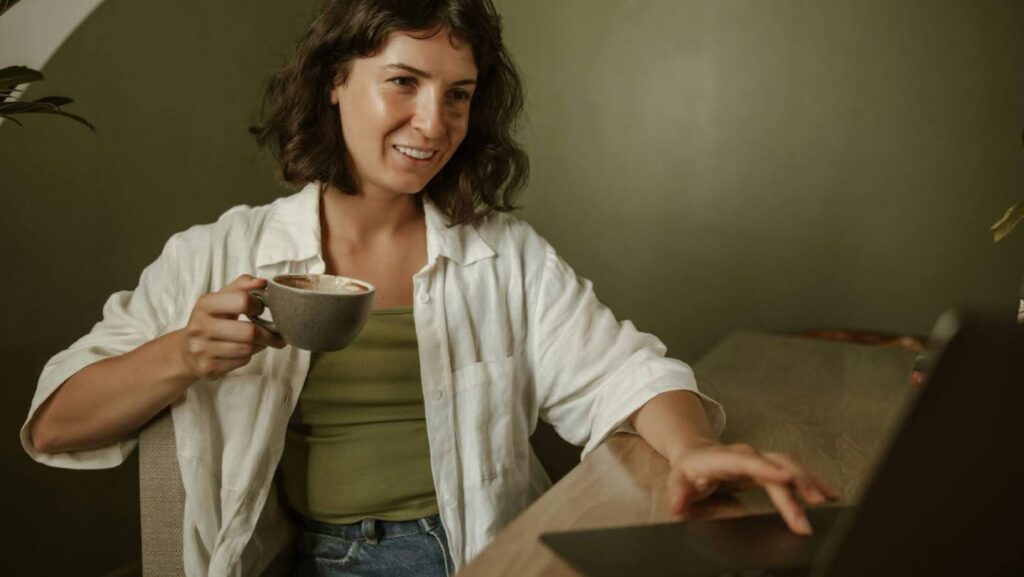Anxiety often moves in quietly. You manage work, care for loved ones, and still feel that steady hum of worry beneath the day. If that’s where you are, you’re not broken or behind. You’re human, and help is absolutely possible. Modern’s online anxiety therapy is built for people who want evidence-based care that fits into real life, not the other way around.
What “trusted” means in practice
Trust in mental health care is earned, not claimed. It looks like licensed clinicians who follow proven methods, a clear plan you help shape, and communication that treats you like a partner. It also looks like privacy you can count on, plus flexible access so you can stay consistent even on busy weeks. When those pieces are in place, therapy stops feeling like another obligation and starts feeling like momentum.
Care grounded in evidence, delivered with warmth
For anxiety disorders, the strongest research supports cognitive and behavioral therapies. Cognitive Behavioral Therapy (CBT) helps you spot and reshape unhelpful thought patterns. Acceptance and Commitment Therapy (ACT) helps you relate differently to anxious feelings while you do what matters to you. Exposure therapy helps your nervous system relearn safety by gradually facing what you have been avoiding. Large reviews continue to identify CBT as a gold-standard approach for anxiety and stress-related disorders, and exposure is a core CBT method for social anxiety and related conditions.
You do not need to memorize acronyms to benefit. A good therapist translates the science into plain language and practical steps you can try the same day. That combination of clarity and kindness is what makes change feel possible.
Why the online format works for many adults and parents
Showing up regularly is half the battle with anxiety treatment. Internet-delivered CBT has repeatedly been shown to work as well as face-to-face therapy for several anxiety disorders, which means you can choose the format that helps you stay consistent. Meta-analyses report comparable outcomes for internet and in-person care for social anxiety and other anxiety conditions. The benefits go beyond convenience. Meeting from a familiar space often makes it easier to open up. Fewer logistics mean fewer missed sessions, which keeps skills fresh and progress steady. For many people, this is the first time therapy fits around caregiving, shift work, or long commutes rather than competing with them.
What to expect in the first weeks
Early sessions focus on understanding your story and setting goals you can measure. Together, you and your therapist identify top targets like easing panic symptoms, rebuilding social confidence, or improving sleep. You learn a small number of skills first, practice them between sessions, then add more as they start to work. That rhythm builds confidence.
If social fear has kept you home, exposure is planned thoughtfully and paced with your input. If worry spirals at night, CBT strategies help you catch and challenge the loop. If anxious sensations feel overwhelming, you learn body-based skills that settle your system enough to make choices again. These methods align with treatment approaches highlighted by national mental health agencies. National Institute of Mental Health
The human side: connection and accountability
Anxiety can feel isolating. Therapy restores connection in two ways: a one-to-one relationship with a clinician who understands anxiety, and opportunities to learn alongside peers when group sessions are part of your plan. Hearing “me too” from others reduces shame and makes new skills stick. Group formats are especially helpful for social anxiety when they include CBT elements and guided practice.
Between sessions, simple check-ins help you apply skills to real moments, like the tense meeting on your calendar or the school drop-off that spikes your heart rate. Accountability is not pressure. It is support that keeps progress from stalling when life gets loud.
How progress usually shows up
Progress is often quieter than people expect. It is falling asleep faster. It is noticing the first flutter of panic and remembering what to do next. It is speaking up once in a meeting and realizing the world did not end. Over weeks, these small wins add up to a steadier baseline.
Research on ACT shows it can reduce anxiety symptoms by building psychological flexibility, although it does not consistently outperform CBT. This matters because it means your therapist can choose the approach that fits you best rather than forcing a single method.
Safety, privacy, and ethical care
Trust also means knowing your information is protected and your care is ethical. Sessions should be confidential, technology should be secure, and treatment should follow current clinical guidelines. You always have the right to ask how your data are handled, who supervises your clinician, and what outcomes the program tracks. Clear answers build confidence and help you focus on healing.
When the plan includes medication
Many adults manage anxiety with therapy alone. Others find that a short or long course of medication, prescribed by a medical professional, adds stability that makes therapy easier to practice. If medication is part of your plan, your therapist can coordinate with your prescriber so the approach feels unified. (Medication decisions should always be made with a licensed clinician who can review your history and monitor effects.)
Why this choice is different
You deserve care that is both compassionate and precise. Modern’s online anxiety therapy is designed for people who want a plan, real human support, and flexibility that respects life’s demands. It combines the therapies most supported by research with practical tools you can use between sessions. For many adults and parents, that mix is what finally moves recovery from “someday” to “now.”Curtiss et al., 2021
Getting started
If something in you is ready to try again, start with a conversation. Share what your days actually feel like. Ask how the therapist measures progress and how you will know when treatment is working. A good program will answer with specifics and invite your questions.
And if you are reading this while supporting a partner or adult child, you matter in this process too.

Your steadiness and encouragement can make therapy feel safer. It is okay to ask for your own support and guidance along the way.
A note on crises and urgent help
If anxiety escalates into thoughts of harming yourself or you feel unable to stay safe, please seek immediate help. In the United States, you can call or text 988 or chat at 988lifeline.org for free, confidential support 24/7. Veterans and service members can press 1 for the Veterans Crisis Line. If you are outside the U.S., contact your local emergency number or a local crisis service. SAMHSA
Bottom line: Evidence-based therapy works, and it can work online without losing the human connection that makes change possible. If you are ready for a calm, steady path forward, Modern’s online anxiety therapy offers a way to begin with both confidence and care.
This article is for general education and is not a substitute for professional medical advice. If you or someone you love is in immediate danger, call your local emergency number now.

